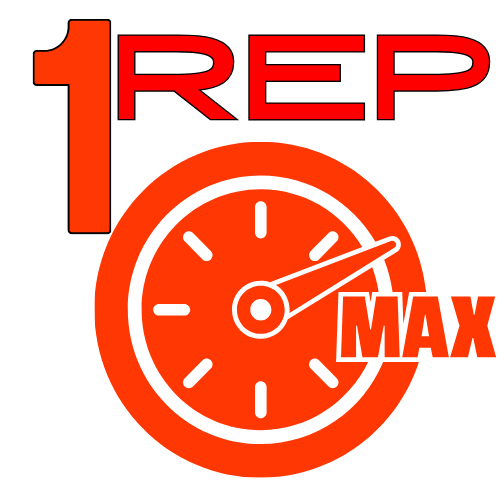Powerlifting is a strength sport focused on maximizing performance in three main lifts: the squat, bench press, and deadlift. This comprehensive guide will help you understand the fundamentals and start your powerlifting journey safely and effectively.
What is Powerlifting?
Powerlifting is a competitive strength sport where athletes attempt to lift the maximum weight possible in three specific movements:
- Squat: A full-body movement targeting legs, glutes, and core
- Bench Press: An upper body pushing movement
- Deadlift: A hip-hinge movement lifting weight from the floor
Benefits of Powerlifting
Physical Benefits
- Increased overall strength and muscle mass
- Improved bone density
- Enhanced functional movement patterns
- Better posture and core stability
- Increased metabolic rate
Mental Benefits
- Improved confidence and self-esteem
- Goal-oriented mindset development
- Stress relief and mental toughness
- Discipline and consistency building
The Three Powerlifts Explained
The Squat
The squat is often called the "king of exercises" because it works multiple muscle groups simultaneously.
Muscles Worked:
- Quadriceps (primary)
- Glutes and hamstrings
- Core and back stabilizers
- Calves and ankles
Basic Technique:
- Position the bar on your upper back (high or low bar position)
- Stand with feet shoulder-width apart
- Initiate the movement by pushing hips back
- Descend until hip crease is below knee cap
- Drive through heels to return to starting position
The Bench Press
The bench press is the primary upper body strength exercise in powerlifting.
Muscles Worked:
- Chest (pectorals)
- Shoulders (anterior deltoids)
- Triceps
- Core stabilizers
Basic Technique:
- Lie on bench with eyes under the bar
- Grip the bar slightly wider than shoulder-width
- Create a slight arch in your back
- Lower the bar to your chest with control
- Press the bar back to starting position
The Deadlift
The deadlift is considered the most functional of the three lifts, mimicking real-world lifting patterns.
Muscles Worked:
- Hamstrings and glutes (primary)
- Erector spinae (lower back)
- Latissimus dorsi and rhomboids
- Forearms and grip strength
- Core stabilizers
Basic Technique:
- Stand with feet hip-width apart, bar over mid-foot
- Hinge at hips and grip the bar
- Keep chest up and back straight
- Drive through heels and extend hips
- Stand tall with shoulders back
Getting Started: Your First Steps
1. Learn Proper Form
Before adding weight, master the movement patterns with bodyweight or an empty barbell. Consider working with a qualified coach initially.
2. Start Light
Begin with weights that feel easy (50-60% of your estimated max) to build confidence and perfect technique.
3. Focus on Consistency
Aim for 3-4 training sessions per week with at least one rest day between sessions.
4. Progressive Overload
Gradually increase weight, reps, or sets over time to continue making progress.
Beginner Powerlifting Program
Here's a simple 3-day per week program for beginners:
Day 1: Squat Focus
- Squat: 3 sets of 5 reps
- Bench Press: 3 sets of 5 reps
- Bent-over Row: 3 sets of 8 reps
- Plank: 3 sets of 30-60 seconds
Day 2: Bench Focus
- Bench Press: 3 sets of 5 reps
- Squat: 3 sets of 5 reps (lighter weight)
- Overhead Press: 3 sets of 8 reps
- Pull-ups/Lat Pulldowns: 3 sets of 8 reps
Day 3: Deadlift Focus
- Deadlift: 3 sets of 5 reps
- Squat: 3 sets of 5 reps (lighter weight)
- Dumbbell Press: 3 sets of 8 reps
- Face Pulls: 3 sets of 12 reps
Essential Equipment
Gym Equipment Needed:
- Olympic barbell (45 lbs/20 kg)
- Weight plates
- Power rack or squat rack
- Bench press setup
- Safety bars/pins
Personal Equipment (Optional but Helpful):
- Lifting shoes or flat-soled shoes
- Lifting belt (for heavier weights)
- Wrist wraps
- Knee sleeves
- Chalk for grip
Safety Considerations
Always Use Safety Equipment
- Set safety bars at appropriate heights
- Use a spotter when possible
- Never lift alone without safety measures
Listen to Your Body
- Take rest days when needed
- Don't train through pain
- Prioritize sleep and nutrition
- Stay hydrated
Common Beginner Mistakes
- Ego Lifting: Adding weight too quickly
- Poor Form: Sacrificing technique for heavier weight
- Inconsistent Training: Skipping sessions frequently
- Ignoring Recovery: Not getting enough sleep or nutrition
- Comparing to Others: Focus on your own progress
Nutrition for Powerlifting
Fuel Your Training
- Protein: 0.8-1g per pound of bodyweight
- Carbohydrates: Primary energy source for training
- Fats: Essential for hormone production
- Hydration: Drink plenty of water throughout the day
Tracking Progress
Keep a Training Log
Record your workouts including:
- Exercises performed
- Sets, reps, and weights used
- How you felt during the session
- Any form cues or notes
Test Your Maxes
Every 8-12 weeks, test your one-rep max (1RM) to gauge progress and adjust training weights.
Related Calculators

One Rep Max Calculator
Estimate your 1RM from submaximal lifts

Strength Level Calculator
See how your lifts compare to strength standards
Next Steps
Once you've mastered the basics and built a solid foundation (typically after 6-12 months), consider:
- Working with a powerlifting coach
- Joining a powerlifting gym or club
- Learning about periodization and advanced programming
- Considering your first powerlifting competition
Conclusion
Powerlifting is an incredibly rewarding sport that builds both physical and mental strength. Start with proper form, be consistent with your training, and focus on gradual progress. Remember, powerlifting is a marathon, not a sprint � enjoy the journey and celebrate every milestone along the way.